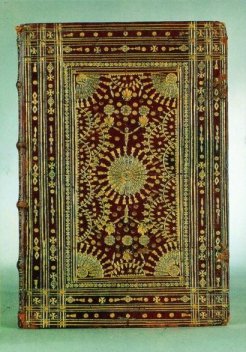(Rivista
Internazionale - December 1999: CELEBRATIONS FOR THE ORDER'S NINTH CENTENARY-
1/1)
CELEBRATIONS FOR THEORDERíS NINTH CENTENARY
Conference
of the International Melitense Academy
 |
|
Malta. Valletta. The President of the Academy, Prof. Paolo Caucci von Saucken, opens the sessions of the International Congress, chaired by H.M.E.H. the Prince and Grand Master with H.E. the Grand Chancellor, Amb. Count Don Carlo Marullo di Condojanni; Rector of the Accademy (to the right). |
The International Melitense Academy held an international conference on "The Arrival of the Knights of St. John in Malta" from 6 to 7 November in the Grand Masterís Palace in Fort SantíAngelo, attended by H.M.E.H. the Prince and Grand Master, Fraí Andrew Bertie.
The idea of the conference, attended by some of most renowned experts on the subject, was to investigate that special moment when the Order of St. John, up to then on Rhodes, arrived in Malta, starting a process which was to affect profoundly for two hundred and fifty years both the history and nature of the Order and the island.
The conference was opened by the Rector of the Academy, Count Don Carlo Marullo di Condojanni, after which Louis Galea, Minister of Education of the Maltese Government, gave an address and Prof. Paolo Caucci von Saucken presented the scope and aims of the initiative. Prof. Anthony Luttrell of the University of London, an expert on the subject, treated the evolution of an institution born in Palestine and the historical circumstances which took it first to Rhodes and then to Malta. Prof. Victor Mallia Milanes examined the relationship between the Hospitallers of St. John and the island on which they established themselves, and Prof. Mario Buhagiar highlighted the extraordinary artistic consequences of their presence. The role played by the Orderís navy, essential for understanding its development and function in the Mediterranean was addressed by Prof. Hugo OíDonnel, director of one of the most prestigious institutes of the Order, that of the University of Madrid. Finally, Prof. Aldo Nigro, of the University of Messina, talked of the moral and spiritual legacy of the knight of Malta, especially in the modern perspective.
 |
|
Malta.
Valletta. H.M.E.H. the Prince and Grand Master with the
President of the Republic, Guido de Marco, during his visit to the
exhibition.
|
The Rector of the University of Malta, Prof. Roger Ellul Ė Micallef closed the conference.
The increasingly significant role that Fort SantíAngelo is taking in the Orderís cultural activities on Malta was stressed by the exhibition inaugurated in the Grand Masterís Palace in the same Fort on 5 November and open for the entire month, devoted to bindings of the books belonging to the Orderís members.
The exhibition contains the best bindings from the archives and libraries of the Knights of St. John preserved in the National Library of Malta (1107-1798) and in the Library and Archives of the Magistral Palace in Rome (1798 to today). Five-hundred years of Italian, German, Spanish and British bookbinding, in parchment, leather and board, some with the coats-of-arms of European royal families, of the Grand Masters and knights, some with intricate motifs revealing the expert work of the best European binders. The National Library of Malta has rare examples of Greek, Turkish, Armenian, Arab and Maltese bindings. The exhibition is completed by a special modern section devoted to books with exclusive bindings, by the major French bookbinders of the 19th and 20th centuries, from the collection of Countess Valeria Rossi di Montelera left on her death to the library of the Magistral Palace in Rome.
The International Melitense Academy was established in 1998 with a Magistral Decree by H.M.E.H. Fraí Andrew Bertie, Prince and Grand Master of the Order of Malta. Count Don Carlo Marullo di Condojanni, Prince of Casalnuovo was appointed Rector and Prof. Paolo Caucci von Saucken President.
 |
|
Magistral Library. Roman "à éventail" binding, XVII century. "Cabreo della Commenda di S. Luca di Perugia". Manuscript. |
The Academy is conceived as a point of contact, coordination and promotion for the Orderís many scientific research and cultural initiatives. A wide-ranging field which has often produced significant initiatives and which it was felt necessary to coordinate and integrate more closely with the Orderís life and overall strategies.
The aims of the Academy include the promotion of research on religious, historical and artistic issues concerning the history of the Sovereign Military Order of Malta, organising conferences, seminars and meetings, publishing the results of research and conference proceedings, as well as articles and studies on these themes. Among its short-term aims there is also that of constructing an archive of the historical memory of the Order, including its modern history, and the formation of a specialised library, partly already set up in the Magione Castle. It will periodically publish a newsletter on the main initiatives carried out or on the agenda.
The possibility of using Fort SantíAngelo, which the Maltese Government has granted to the Order of Malta for 99 years, has given a strong impulse to the Academy. Equipped with suitable premises, in a structure of great artistic value and extraordinary historical significance, the Academy is already fully functional. A state-of-the-art information system will link it up not only with the Priories, Delegations and cultural institutions of the Order around the world, but also with universities, archives and libraries and with individual experts interested in research into the Order.
The conference was preceded on 5 October, in Fort SantíAngelo, by the inauguration of the monumental bronze statue of St. John the Baptist, offered by the Monegasque National Association for the commemoration of the Orderís nonacentenary, attended by the highest authorities of the Order and Maltese Government.
| Malta Valletta. H.M.E.H. the Prince and Grand Master with Prof. Paolo Caucci von Saucken, President of the Academy, and the Rector of the University of Malta to his right. |